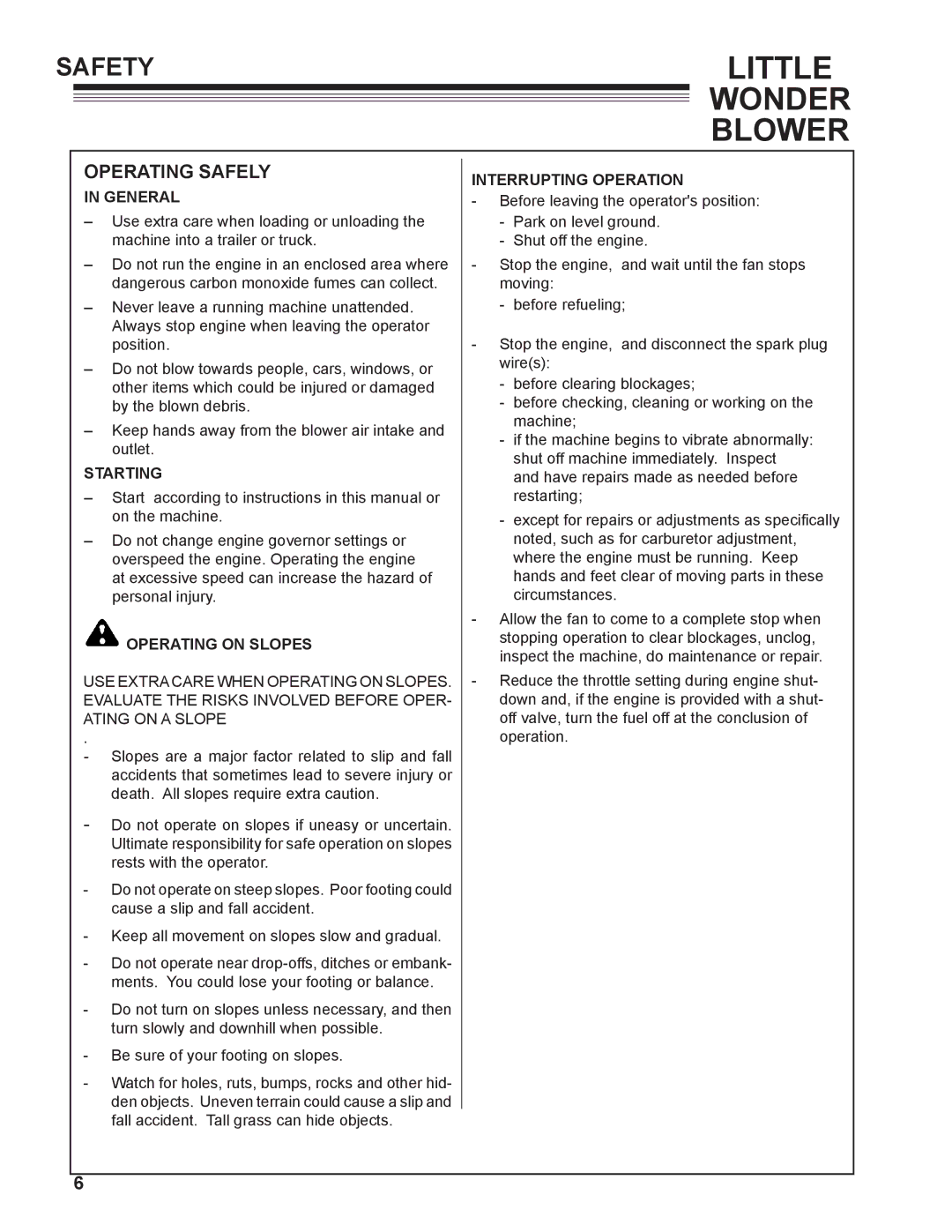2/1/1990, 2/1/1970, 3/1/2000, 3/1/1970, 4/1/1970 specifications
Little Wonder is a name deeply embedded in the evolution of garden and lawn care equipment. Established in the early 20th century, this brand has made significant contributions to gardening technology across various decades, particularly highlighted by models and innovations that emerged around the years 1970 and 2000.In 1970, the Little Wonder company showcased a range of robust outdoor power equipment. One of the standout products from this era included the Little Wonder 4/1/1970. This model was renowned for its exceptional versatility and ease of use. It was designed primarily for landscaping professionals and serious gardeners who required efficiency and reliability. The 4/1 model featured a lightweight construction, making it accessible for users of various physical capabilities. Its powerful 4-stroke engine provided both strength and efficiency, allowing gardeners to tackle a variety of tasks such as mowing, debris removal, and edging seamlessly.
Transitioning to later models, the innovations continued with the introduction of the Little Wonder 3/1/1970 and 3/1/2000. These align with the trend of integrating more advanced technologies into garden equipment. The 3/1 models paralleled the shifting focus toward user-friendly designs with enhanced performance. These models incorporated ergonomic features such as cushioned grips and adjustable handles, addressing the growing demand for comfort during prolonged use.
By the late 1990s, specifically with the 2/1/1990 model, Little Wonder had embraced the burgeoning technology of the time, featuring more eco-friendly engine options which were quieter and produced fewer emissions compared to their predecessors. This gave users the dual benefit of exceptional performance combined with environmental consciousness.
Entering the new millennium, the Little Wonder 2/1/2000 reflected a peak in technology with the adoption of digital controls for easier operation and monitoring. These advancements not only improved the performance of older models but also set the stage for the future of garden care, insisting on efficiency, sustainability, and user accessibility.
Overall, Little Wonder has continually evolved, adapting to the needs of users while embracing new engineering and environmental developments. This journey through the decades showcases the brand's commitment to quality and innovation that has resonated with both amateur gardeners and landscaping professionals alike.

